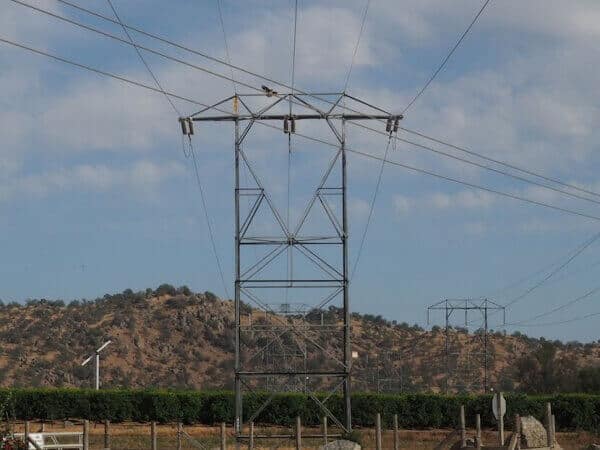In 1913 in Southern California, two 241-mile-long electric lines began carrying power from hydroelectric dams in the Sierra Nevada to customers in Los Angeles—a massive feat of infrastructure. In 1923, power company Southern California Edison upgraded the line to carry 220,000 volts, among the highest voltage lines in the world at the time.
Then the problems started. Power interruptions caused by short circuits cropped up every few days, inconveniencing consumers and threatening to damage expensive equipment.
In a new paper in the journal Environmental Humanities, the University of Pennsylvania’s Etienne Benson examines the suspected cause of the troubles: voluminous streams of bird excrement.
Benson is an assistant professor in the Department of History and Sociology of Science in Penn’s School of Arts and Sciences. His piece considers the story of how the birds were identified as the likely culprit, the steps the power company took to ameliorate it, and how those interventions are rendered “invisible” to the end user, consumers who use electricity without full awareness of what is entailed in its generation.
“When you flip on a light switch you’re not only engaging with a whole electrical system, but you’re also engaging with the environment behind it,” Benson said. “That part is rendered invisible. Most people don’t think about the fact that when you turn on a light you’re plugging into a system that involves hydroelectric dams, that almost certainly involves carbon dioxide emissions, and that may involve birds and other animals as well.”
Benson, who has long been interested in human-animal relationships and how they’re affected by technological developments, learned of the California electrical system and nature’s role in affecting it through an article written in 1928 by engineer and amateur ornithologist Harold Michener.
Michener’s article described several theories as to why Southern California Edison’s power lines experienced short circuits. Company engineers proposed various causes—from lightning storms to spider webs—but none fully explained the problem. Finally, a worker observed what appeared to be an eagle perched on top of a transmission tower. As it launched itself from the tower into flight, a stream of semi-liquid droppings fell onto the power lines.
“They had a brain flash that it’s actually the birds’ excrement that causes it. They did lab tests and found it was possible,” Benson said.
Benson corroborated the serious nature of this threat to the power grid through research into contemporaneous trade publications and the power company’s own papers. The engineers’ hypothesis was that hawks and eagles were attracted to the transmission towers as high lookout points from which to hunt. The jets of excrement they released when launching from the towers could carry electric current from the wire to the steel tower, causing a short circuit.
In response, the company installed barriers, spikes and excrement-catching pans on the towers—at considerable cost. The problem soon dissipated although it never vanished completely. In addition, as the power grid became more sophisticated, it was segmented and automatic relays were installed so that power could be more easily restored.
Benson termed these two strategies of reducing the effects of nature on technology “insulation,” putting distance between the forces of nature and the infrastructure—and “interconnection,” building resilience into the system. Both types of interventions, he noted, were invisible to consumers, who could simply access electricity without considering the hard work and environmental impact behind the generation of power.
His work engages with that of Thomas Hughes, a historian of technology and emeritus professor at Penn until his death last year. Hughes pushed forward the idea of considering the influence of whole systems rather than individual technologies. For electrical power systems, Benson explained, that systems thinking would suggest that their success “depended both on technical achievement and on the heterogeneous engineering of society, culture, politics and economics.”
To this, Benson adds the natural environment and non-human actors as crucial influences that impact the operation and maintenance of infrastructure systems. And examples go far beyond just birds on transmission towers.
“It may not be birds,” Benson said. “It could be squirrels, it could be ice or storms, but there are all these forces trying to rip things down. You could look at problems that homeowners have with sewer systems and plumbing where tree roots can break in and cause problems, or how the roads in Philadelphia are vulnerable to being broken apart by the environment.”
To counteract and sometimes prevent these impacts, societies have implemented a variety of regimes of maintenance and protection to ensure that infrastructure continues to function, Benson said. Such interventions are ever-present in today’s modern industrial landscape, even as people may go about their days without conscious awareness of them.
“We may think we’re separate from nature, but actually everything we do is deeply embedded in it,” Benson said. “The modern industrial landscape, which seems so hard and durable, requires constant maintenance for it to continue seeming hard and durable.”


